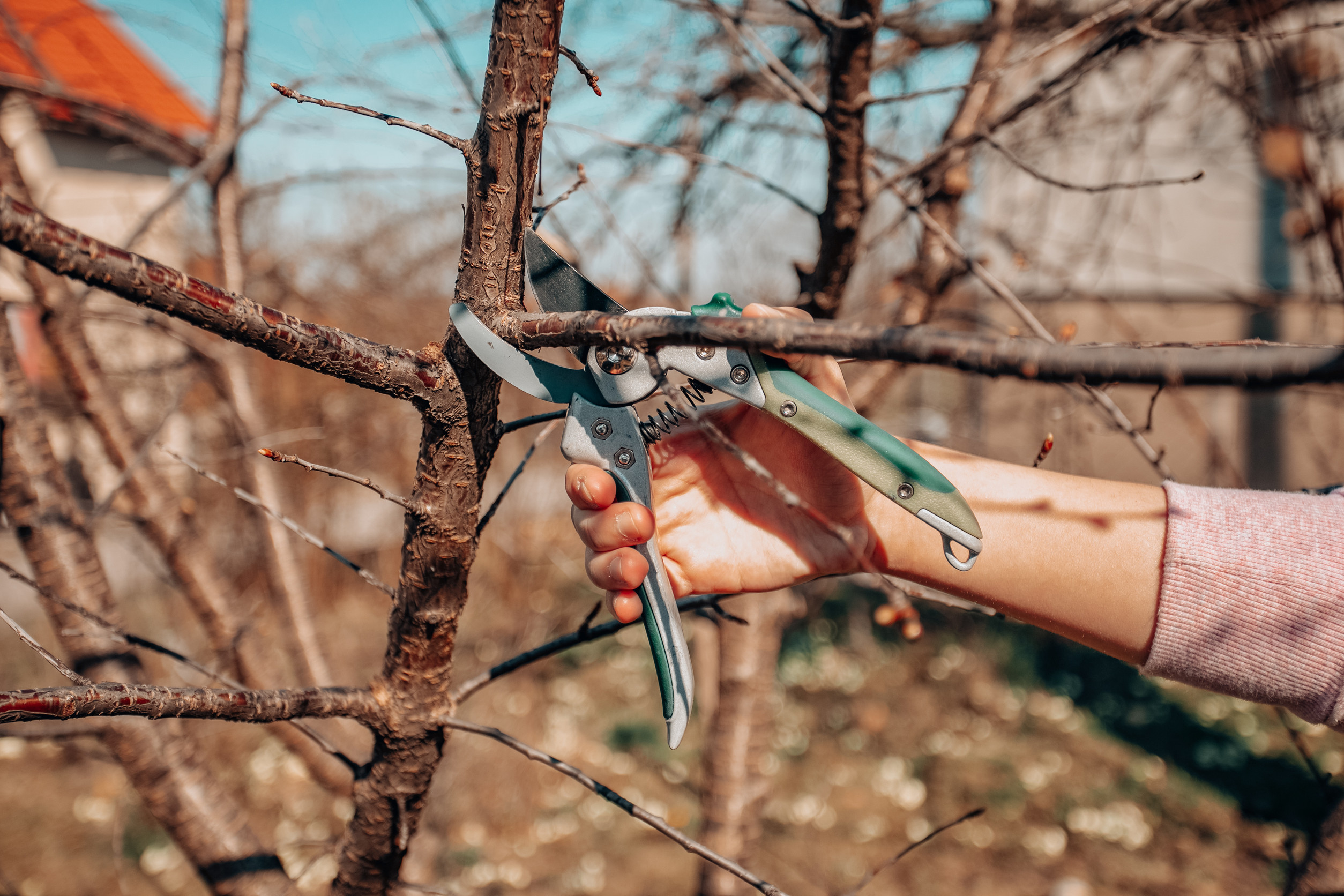
Image Source: 123rf.com
There’s something magical about autumn. The air gets crisp, leaves turn into fiery mosaics, and your yard suddenly looks like it belongs on a postcard. But behind that seasonal beauty, your trees are quietly preparing for their next big act—spring growth. Here’s the kicker: how you care for your trees in the fall can make or break their performance come springtime. And one of the best-kept secrets to lush, vibrant trees? Fall pruning.
The Secret Timing: Why Fall Pruning Hits the Sweet Spot
Timing is everything in nature, and fall is like the “golden hour” for pruning. When the growing season slows and leaves start to drop, trees enter dormancy—meaning their energy is shifting inward instead of being spent on new growth. This gives you the perfect opportunity to prune without stressing the tree. You’re not competing with active sap flow or growth cycles, so cuts heal better and faster. Plus, pruning in fall helps trees conserve strength through winter and direct their energy into fresh spring growth when the season turns.
Out With the Old: Clearing Deadwood Before Winter
Fall pruning is like a tree’s version of a good decluttering session. By removing dead, diseased, or damaged branches before winter sets in, you’re sparing your trees from unnecessary strain. Deadwood can attract pests or harbor fungus, both of which can wreak havoc during the cold months. Removing that material early ensures your trees stay healthy and strong when temperatures drop. Think of it as giving your trees a clean slate—free of baggage and ready to thrive once spring sunshine returns.
Better Shape, Better Growth
Trees aren’t just living organisms—they’re also living architecture. When you prune in fall, you’re shaping your tree’s structure for the future, guiding how it will grow once warmer weather returns. Strategic pruning can encourage balanced growth, stronger limbs, and a more open canopy that allows better sunlight penetration. This improves air circulation, reduces the risk of disease, and gives the tree a more attractive, uniform shape. A well-pruned tree isn’t just healthier—it’s more beautiful, too.
Reducing Winter Damage
Winter weather can be brutal. Snow, ice, and high winds can break weak or overgrown branches, sometimes causing severe damage. Fall pruning reduces this risk by lightening the load and strengthening the tree’s overall structure. Removing weak or crossing branches now means fewer surprises when the first storm hits. It’s a bit like reinforcing your roof before a snowstorm—you’ll thank yourself when things get rough.
Encouraging Stronger Spring Buds
Pruning in fall isn’t just about removing the bad stuff—it’s also about setting the stage for the good. When you trim back branches strategically, you encourage the tree to push nutrients toward healthier, more productive buds. This means come spring, your tree will burst to life with stronger, more vibrant growth. Flowers bloom more fully, leaves emerge greener, and fruit trees—if you have them—produce better yields. Essentially, you’re giving your trees a head start on a winning growing season.

Image Source: 123rf.com
Keeping Pests in Check
Fall pruning also helps protect your trees from unwanted guests. Pests love to settle into dead branches, cracks, and weak spots to overwinter, emerging in spring ready to cause chaos. By removing these hiding places before winter, you reduce the chance of infestations later. You’re not just cleaning up your trees—you’re cutting off a whole generation of pests before they even get started. The result? Healthier trees, fewer headaches, and less pesticide use when the growing season rolls around.
Easier Cleanup and Less Stress Later
Another underrated perk of fall pruning? It makes spring maintenance easier. When you prune before winter, fallen leaves and trimmed branches can be cleaned up all at once, keeping your yard neat and ready for the next season. Come spring, you’ll have fewer dead branches to deal with and more time to focus on fertilizing, watering, and enjoying the fresh blooms. Fall pruning also spreads out your garden workload so you’re not rushing through everything when the weather warms. It’s smart, efficient, and a lot less stressful.
Aesthetic Appeal All Year Long
Let’s not forget that pruning also makes your landscape look amazing. Even when your trees are bare, clean, well-shaped branches create a polished, intentional look that enhances your yard’s overall design. You’ll notice the difference every time you glance outside—neat silhouettes, tidy lines, and trees that look cared for rather than overgrown. As an added bonus, this kind of upkeep can even boost your property’s curb appeal. Whether you’re showing off your yard or simply admiring it from your window, fall pruning keeps your landscape picture-perfect.
Pruning the Right Way
Of course, pruning isn’t just about grabbing shears and hacking away. It’s both art and science. Always use sharp, clean tools to avoid tearing bark or spreading disease. Cut just above growth nodes or branch collars, never leaving stubs. And remember: less is often more. It’s better to prune gradually and thoughtfully than to overdo it. Your trees will thank you with stronger growth, better form, and fewer health problems down the road.
Set the Stage Now, Reap the Rewards Later
Fall pruning might not be as glamorous as spring blooms, but it’s the behind-the-scenes work that makes all that beauty possible. When you take the time to prune properly in autumn, you’re setting your trees up for success—stronger roots, better growth, and healthier canopies. Come spring, the payoff is obvious: vibrant color, lush leaves, and thriving trees that light up your yard.
Have you tried fall pruning before, or have your own tips for seasonal tree care? Share your stories, insights, or advice in the comments section below.
You May Also Like…
- The Root Pruning Hack That Supercharges Growth
- How to Grow a Garden That Survives Neglect
- The Shade Garden Strategy That Turns Dead Zones Into Lush Retreats
- 8 Compost Ingredients That Break Down Faster in Fall
- 12 Herbs That Thrive in Cooler Temperatures
Leave a Reply